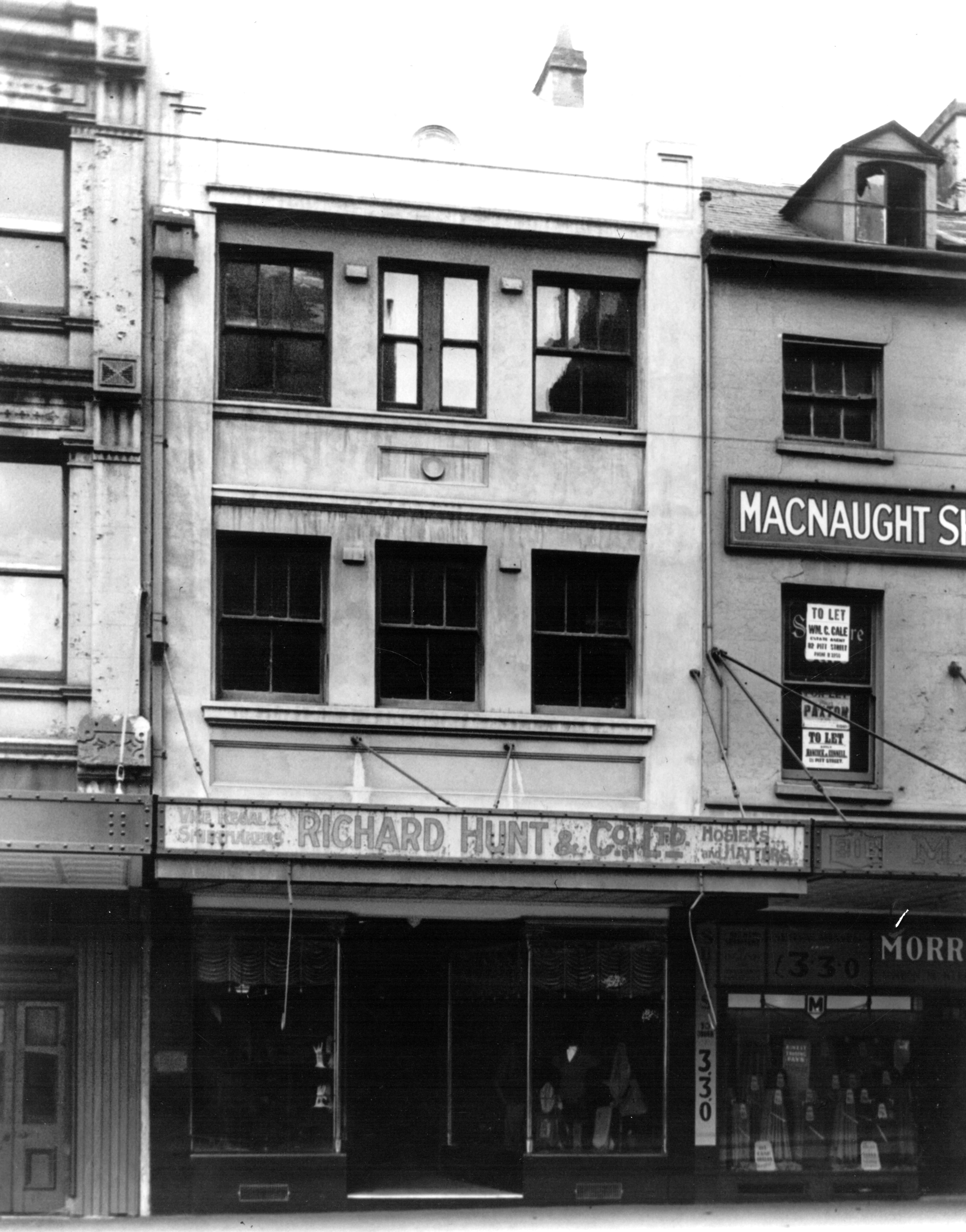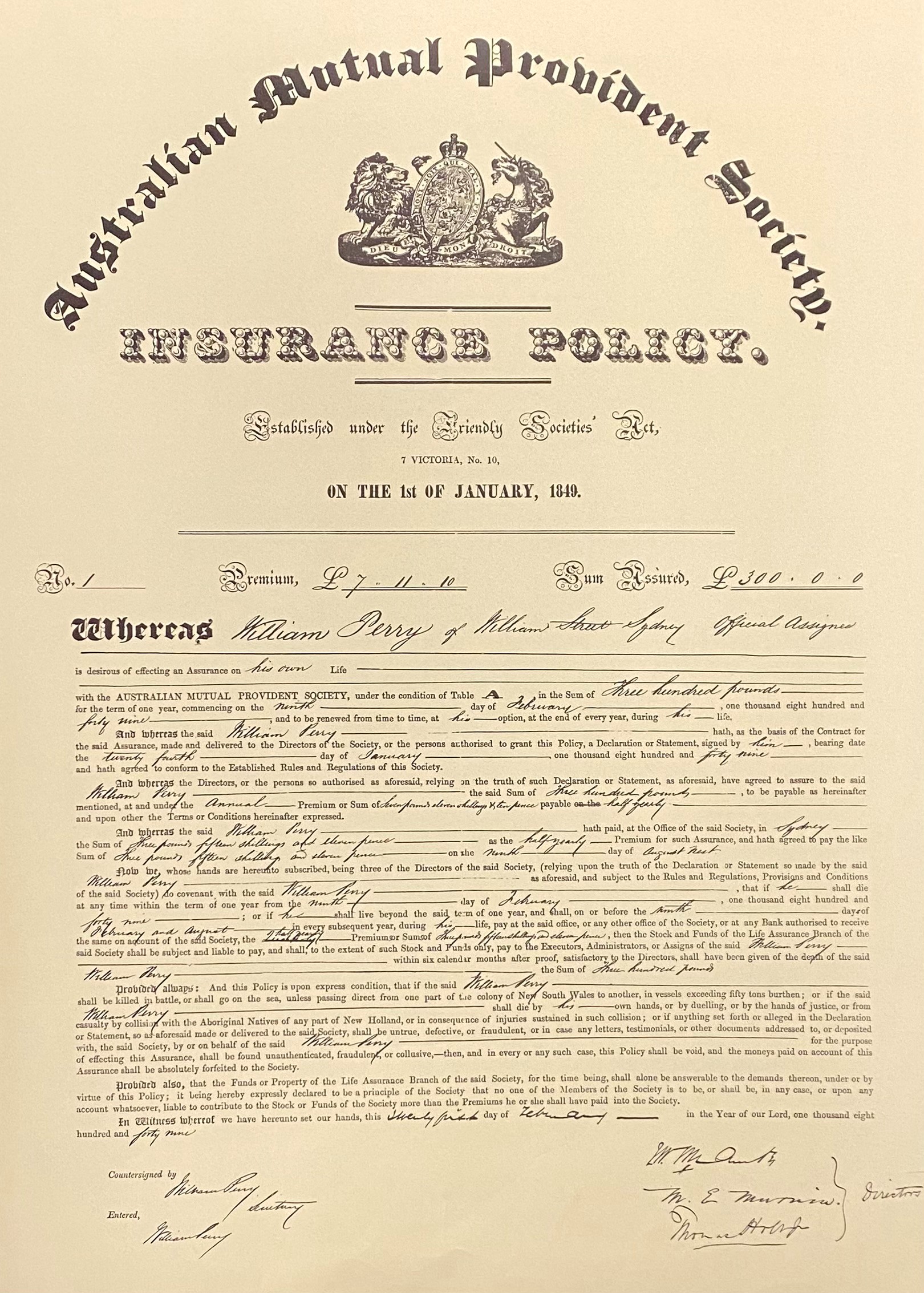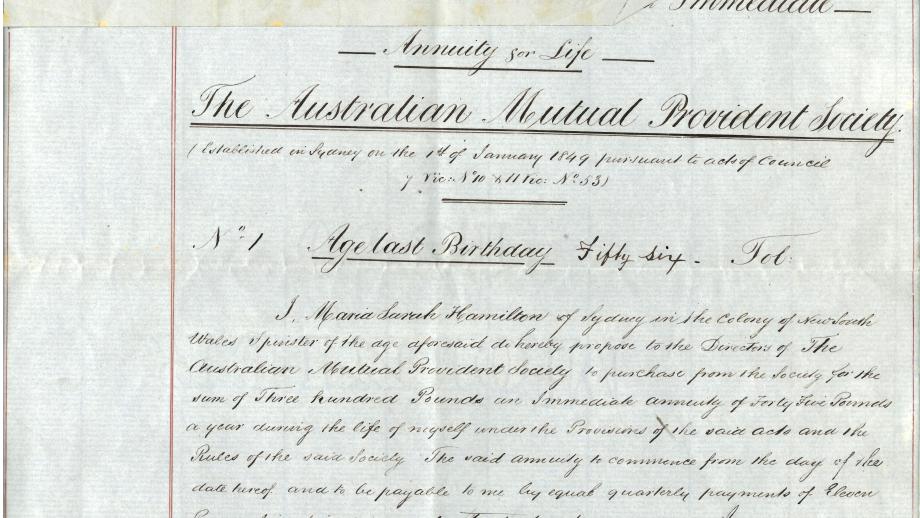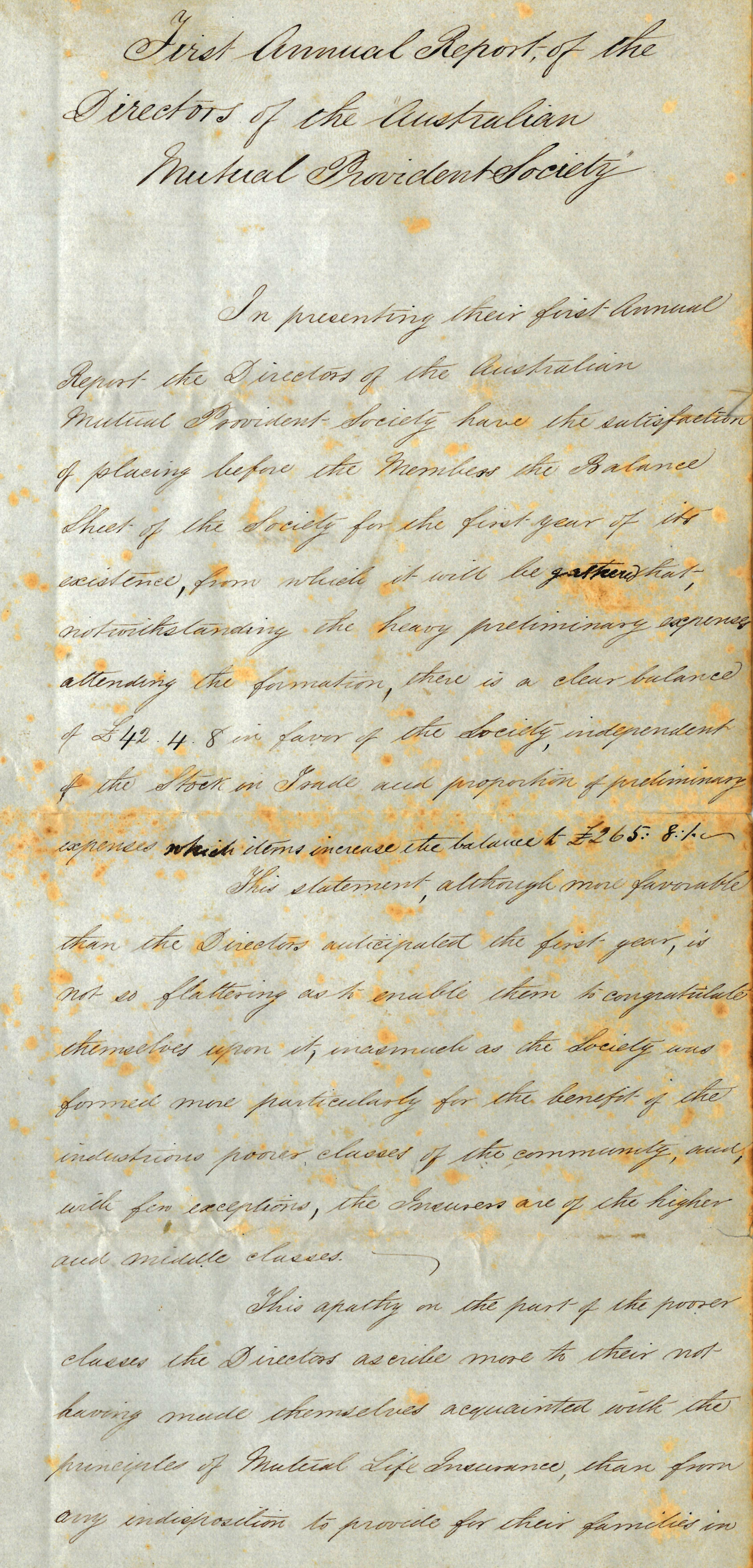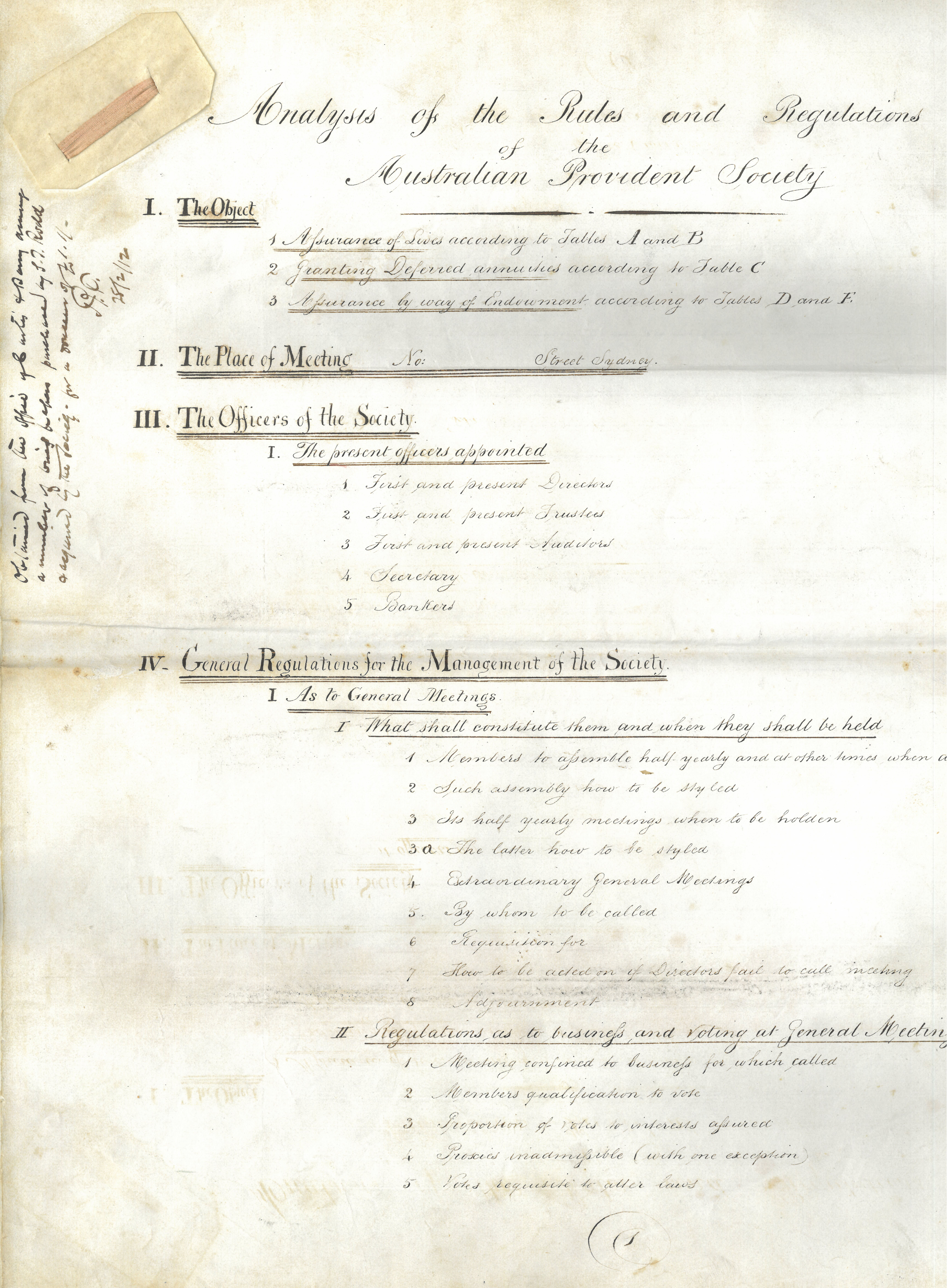Early Days
On 1 January 1849 AMP officially opened for business, with an office at 470 George Street, Sydney, in an upstairs room above a grocer’s shop. Initially business was so uncertain that the office only opened for 1-2 hours each day.
On 25 February 1849 AMP issued its first policy to its secretary William Perry. This was the first policy issued by any Australian insurance company. Perry worked in an unpaid capacity at the AMP Sydney office between 10am-4pm each day. He wrote to all clerks of petty sessions in New South Wales asking each to act as part-time local agents for AMP. Many accepted and subsequently AMP secured agents across New South Wales, plus the services of Henry Abbott in Queensland and Charles Bradshaw in Victoria (known as the Port Phillip District) to act as local agents.
Initially most business came from AMP’s own office bearers but in March 1849 the Society issued its first policies to those not associated with AMP. In its first year AMP issued 45 policies and produced a credit of £93.13.2.
AMP initially found business challenging. Insurance and annuities were poorly understood by the public. Annuities were particularly confusing and were best suited to those near retirement. Purchasing an annuity from AMP involved paying out a substantial lump sum and in return, receiving a pension payment every quarter. For those who lived a long life, an annuity worked well, but they made little sense for those who died young. AMP also sold what was known as a deferred annuity, which was closer to the life insurance we know today. The policyholder contributed around one shilling per week and after retiring at age 60, those on an average salary received approximately £90 per year, affording them a comfortable life. But for many, including women and low wage earners, one shilling per week was hard to spare.
Finally in April 1851 AMP reached the milestone of issuing 100 policies and fortunately, it wasn’t until 1852 that it paid its first claim, for £100 after the death of Mr John Webb. So risky was business in its early years that if two of AMP’s members died within weeks of each other, there was serious doubt it could easily afford to pay out the policies.
AMP took a cautious approach to who it insured. The directors met weekly to sign off on all applications, rejecting those in high-risk occupations. Those who engaged in strenuous work, were pregnant, or had undisclosed health conditions risked cancellation of their policies or the requirement to pay a surcharge. Initially AMP also refused to issue policies to members of the military and would not pay out a policy where the holder had committed suicide.
To assist with assessing prospective members, AMP employed medical referees who were paid one guinea for each medical examination. Their thoroughness was essential to AMP’s success. Applicants were quizzed about their alcohol consumption, sexual activity and disease history and close examination was made of the heart, kidneys, bladder and liver.
Despite exercising great caution, some mistakes were made, such as with the first policy issued to a woman. In August 1850, Miss Maria Sarah Hamilton applied to purchase an annuity for £300. This would pay out £45 annually for the remainder of her life. Remarkably, no one properly checked her age, and it was assumed she was 63 rather than her 56 years. Miss Hamilton lived another 35 years, meaning her £300 premium was paid back to her by AMP in just seven years and she spent the remaining 28 years receiving a generous quarterly payment from AMP.
With business improving, in the early 1850s AMP appointed agent J.A. Gilfillan in Auckland (1854) and William Knight in Hobart (1855). In 1855 William Perry, so instrumental in AMP’s success, died in very sad circumstances, having been sent to the mental asylum at Bedlam Point in Sydney. Such was AMP’s respect for Perry, that the board offered his widow £110 per year for the remainder of her life or to her children until the age of 21 should she die early, if she surrendered Perry’s policies.

